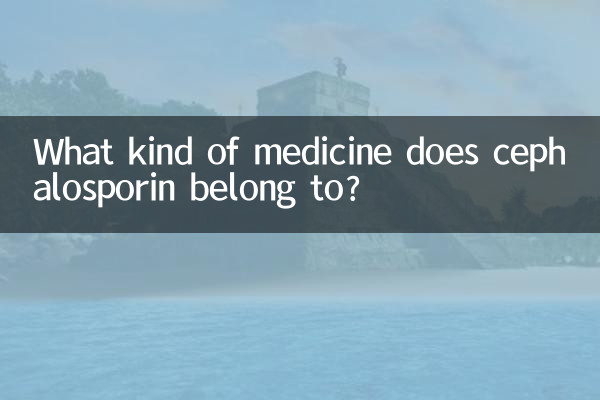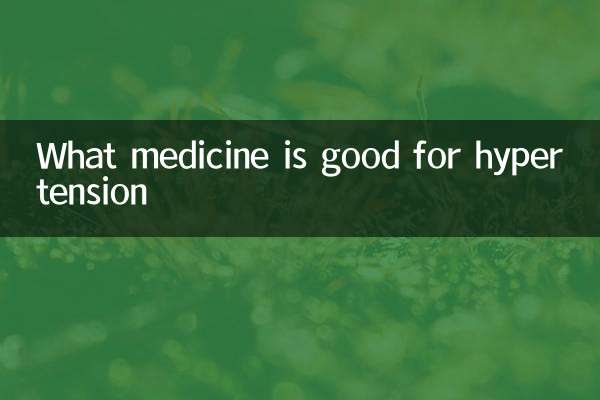What medicine is cephalosporin
Cephalosporins is a class of antibiotics widely used in clinical practice and belongs to the cephalosporins among β-lactam antibiotics. They kill or inhibit bacterial growth by destroying the synthesis of bacterial cell walls, and have the characteristics of a wide antibacterial spectrum and significant therapeutic effect. The following is a detailed introduction to cephalosporin drugs.
1. Classification of cephalosporin drugs

Cephalosporin drugs can be divided into four generations according to their antibacterial spectrum and development time, and the antibacterial properties and indications of each generation are different:
| Farewell | Representative medicine | Antibacterial spectrum | Indications |
|---|---|---|---|
| The first generation | Cefazolin, Cefaxelpine | Mainly targeted Gram-positive bacteria | Skin infection, respiratory infection |
| Second generation | Cefuroxime, Cefaclo | Take into account both Gram-positive and negative bacteria | Otitis media, urinary tract infection |
| The third generation | Ceftriaxone, Ceftazidine | Focus on Gram-negative bacteria | Severe infection, sepsis |
| Fourth Generation | Cefepime, Cefpiro | Broad-spectrum antibacterials, including drug-resistant bacteria | Complex hospital infection |
2. The mechanism of action of cephalosporin drugs
Cephalosporins play a bactericidal effect by inhibiting the synthesis of bacterial cell walls. The specific mechanism is as follows:
1.Binding penicillin-binding proteins (PBPs): Cephalosporins bind to PBPs on bacterial cell membranes, hindering the cross-connection of peptidoglycans in cell walls.
2.Destroy cell wall integrity: Causes bacterial cell wall defects, water seeps in, and eventually bacteria breaks and dies.
3.Time-dependent sterilization: The efficacy is related to the time when the drug concentration exceeds the minimum inhibitory concentration (MIC).
III. Clinical application of cephalosporin drugs
Cephalosporin drugs are widely used to treat various bacterial infections. The following are common indications and precautions for medication:
| Infection Type | Recommended medicines | Treatment | Contraindications |
|---|---|---|---|
| Respiratory tract infection | Cefaclo, cefurocin | 5-7 days | Use it with care for those who are allergic to penicillin |
| Urinary tract infection | Ceftriaxone, Ceftazidine | 3-5 days (simpleness) | Dosage adjustment is required for renal insufficiency |
| Skin soft tissue infection | Cefazolin | 7-10 days | Avoid taking alcohol |
4. Adverse reactions of cephalosporin drugs
Although cephalosporins are highly safe, the following adverse reactions may still occur:
1.Allergic reactions: Rash, itching, and allergic shock may occur in severe cases (the incidence rate is about 0.02%).
2.Gastrointestinal reaction: Diarrhea (especially cephalosporin 3), nausea and vomiting (invasive rate 5-10%).
3.Liver and kidney toxicity: High doses may cause increased aminotransferase (incidental rate <1%).
4.Disulfiram-like reaction: Some cephalosporin drugs may cause facial flushing and palpitations when taken together with alcohol.
5. Precautions for using cephalosporin drugs
1.Skin test requirements: People with a history of penicillin allergy need to undergo a skin test (the positive rate is about 10% cross-allergic).
2.Medication time: Most of them need to be administered 2-3 times a day to maintain effective concentration.
3.Special group of people: Pregnant women (Class B) and lactating women need to weigh the pros and cons, and children should adjust the dosage according to their weight.
4.Drug resistance issues: Avoid abuse and choose according to drug sensitivity results (my country's drug resistance rate is about 30-50%).
Conclusion
As an important antibacterial weapon, cephalosporin drugs play an irreplaceable role in anti-infection treatment. Rational use requires the doctor to choose appropriate varieties and courses of treatment based on the pathogenic examination results and the individual patient's situation. The public should avoid taking medication by themselves, and seek medical treatment in a timely manner when symptoms of infection occur to ensure that the medication is safe and effective.

check the details

check the details